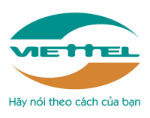Price adjustment lags and their asymmetries in Vietnam
International Journal of Economics and Business Research (IJEBR), Vol. 17, No. 3, 2019The paper aims to investigate factors that influence the speed of price adjustments in response to shocks by firms in Vietnam, using a multivariate ordered probit model with survey data. The results indicate that the speed of price adjustment is more likely to depend on the size of shocks and economic conditions than on whether firms are state or time-dependent price reviewers. We document that firms use the rule-of-thumb in price setting tend to adjust prices more slowly in response to shocks than their counterparts who set prices based on the market conditions and that firms whose prices are influenced by competitors tend to be more flexible in reaction to shocks. In addition, we find that menu costs and contracts are the two most important theories in explaining price stickiness; however, they seem to induce firms to respond more slowly only to shocks that drive prices downwards, rather than to shocks that move prices upwards. Finally, the degree of competition, the market share, the size of firms, the practice of quantity discounts, the share of state ownership, and the sector where firms operate all matter with regards to how quickly and asymmetrically firms react to shocks.















